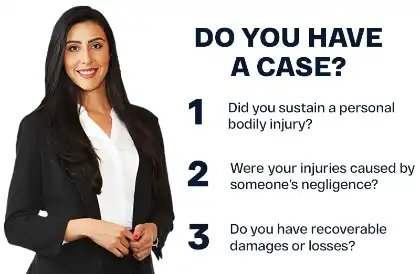Table of Contents
Upper cervical trauma (commonly referred to as upper neck injury) may occur in car collisions, falls, and high-impact sports. Whiplash is one of the most common neck injuries. Despite its prevalence, chronic whiplash remains a mystery to medical professionals. There have been various studies on whiplash, but medical professionals continue to debate its precise location and mechanism. Nevertheless, many experts agree that the upper cervical spine ligaments could be the potential site of the injury.
Generally, whiplash occurs after sudden and forceful neck movements in car accidents, particularly rear-end collisions. Sports injuries, slips and falls, a sudden and severe blow to the head, or assault can all trigger whiplash. Insurance companies and even some victims see whiplash as a minor, inconsequential injury. However, whiplash could have far-reaching implications, from limited mobility to permanent nerve damage.
Understanding Upper Cervical Trauma And Whiplash
Upper cervical trauma refers to injuries affecting the uppermost vertebrae of the cervical spine. This region, composed of the atlas (C1) and axis (C2), plays a crucial role in head and neck movement. The C1-C2 region is generally sturdy and resistant to injury. However, injuries may still occur due to trauma or degenerative conditions.
Whiplash is a common injury that may occur after motor vehicle accidents or sudden impacts. It refers to an injury to the neck caused by a forceful back-and-forth movement. This rapid motion can cause damage to muscles, ligaments, and other soft tissues in the cervical spine or neck.
If an injured victim of a car accident or slip and fall incident has upper cervical trauma with whiplash, it means they have two related injuries. Whiplash is a broader term encompassing various injuries to the cervical vertebrae and the adjacent soft tissues (i.e., muscles, tendons, or ligaments). Upper cervical trauma, on the other hand, is a more specific type of injury, focusing on the damage to the upper part of the neck.
How Do Doctors Diagnose Whiplash And Upper Cervical Trauma?
Diagnosing upper cervical trauma and whiplash is not as straightforward as other car accident-related injuries. Healthcare providers must rule out other serious conditions before ordering imaging scans and other tests. They would also ask questions about your symptoms.
To diagnose whiplash, cervical X-rays, CT scans, and MRI scans might be necessary. An electromyography (EMG) may also be necessary to determine if nerve damage is persistent. These medical tests can be expensive, especially when they are required abruptly due to an accident. Many people have to dip into their emergency savings or even take out loans to cover the costs of these procedures. However, what’s worse is ignoring the pain and symptoms.
Regardless of their current financial situation, accident victims may be able to consult personal injury attorneys who can evaluate their case to see whether they have grounds to pursue compensation. Our car accident lawyers can also work with primary care physicians, accident reconstructionists, and other industry professionals to ascertain the full extent of your injuries and estimate your current and potential damages.
Our attorneys work on a contingency fee basis, which means you won’t owe us lawyers’ fees unless we win your case. While attorneys’ fees may be deferred, you may still be charged separately for certain case-related costs. For more information and a review of our fee agreements, contact us to schedule a free initial consultation.
Risk Factors For Severe Upper Cervical Whiplash Injuries
In worst-case scenarios, whiplash could lead to cervical spinal cord injuries that could be life-threatening or permanently debilitating. Medical experts use the Canadian Cervical Spine Rule to decide if an alert and stable cervical trauma patient needs imaging. In a series of more than 16,000 cases, it has only missed one unstable injury, proving its reliability and safety.
Most hospital settings have limited imaging resources. The Canadian C-Spine Rule helps avoid the unnecessary use of imaging resources, keeping them available for patients who need them most.
The following are high- and low-risk factors for severe spinal cord injuries based on the assessment tool:
High-Risk Factors
- Patients 65 years old and older.
- Experiencing paresthesia in the extremities.
- Dangerous causes of injury, such as:
- Falling from a height of at least a meter or five flights of stairs.
- High-speed car accidents, especially with rollovers or ejections.
- Collision with RVs.
- Bicycle collisions.
- Axial loading (force directed through the top of the head to the spine).
Low-Risk Factors
- The ability to sit rather than lie down.
- Delayed onset of neck pain.
- Able to move around at any time.
- No midline cervical spine tenderness is present.
- Injury due to a rear-end collision rather than a rollover, a collision with a bus or a large truck, a high-speed crash, or an accidental push into oncoming traffic.
Two Types Of Injuries In Acute Whiplash
A whiplash injury (often referred to as a hyperextension/hyperflexion injury) results from the hyperextension (sudden extension) and hyperflexion (excessive flexion or bending forward) of the neck, particularly the cervical spine.
Two types of injuries are associated with whiplash:
- Hyperextension injuries typically happen in rear-end collisions. The body is thrown forward, but the head lags due to inertia, causing the neck to extend excessively backward (hyperextension). When the neck is stretched to the max, it snaps forward, excessively flexing the cervical spine (hyperflexion). Aside from traffic accidents, this injury is also commonly caused by sports injuries, assaults, and falls.
- A rapid deceleration injury can also happen when the head bends forward, causing the cervical spine to flex. With sufficient force, the abrupt forward movement may result in longitudinal distraction and neurological damage, even when the chin restricts flexion. The ensuing recoil may also lead to hyperextension.
If you are suffering from any of these whiplash injuries because of someone else’s negligence, you may want to consult an attorney to assess whether your case may qualify for compensation. If you have questions about filing a claim, our injury lawyers can answer them.
Symptoms Of Whiplash-Associated Disorders (WAD)
Whiplash symptoms can vary from one individual to another and depend on how severely your neck is extended or compressed. Experts have created a grading system for the severity of WADs, known as the Quebec Classification of Whiplash-Associated Disorders, to classify symptoms.
The grading system and its symptoms are as follows:
Grade 0
The victims don’t show any symptoms of the injury. They also don’t feel pain.
Grade 1
The victim feels pain from the injury, as well as the following symptoms:
- Tender to the touch.
- Stiffness when moving.
Grade 2
Aside from pain and symptoms from Grade 1, there are also other physical signs of the injury, such as:
- Muscle spasms affecting neck mobility.
- Swelling.
- Bruising.
- Sensitivity to touch.
- Pain that spreads to the head, shoulders, back, and face.
Grade 3
This level involves neurological symptoms caused by swelling or inflammation that disrupt nerve signals traveling through the affected area. Symptoms of Grade 3 WAD include:
- Muscle weakness.
- Headaches.
- Paresthesia (sensation of burning, tickling, tingling, and “pins and needles” under the skin) in the neck, upper back, upper arms, and shoulders.
- Numbness in the neck, upper back, upper arms, and shoulders.
- Dizziness or vertigo.
- Dysphonia (hoarseness or loss of voice).
- Dysphagia (trouble swallowing).
- Vision problems.
Grade 4
Symptoms of Grade 4 WAD typically involve all symptoms from Grades 1 to 3, with an emphasis on the neurological ones. However, Grade 4 symptoms tend to be more severe, often because at least one neck vertebra is broken, misaligned, or displaced. These issues put pressure on the spinal cord, messing with nerve signals to and from the brain.
Additionally, whiplash is one of those injuries where symptoms may manifest either immediately or several days after the incident. Usually, pain from a whiplash injury appears within six to 12 hours. Visit a doctor right after an accident to assess your injuries, even if you feel fine.
How Common Are Whiplash Injuries, And Who Is More At Risk?
Certain groups of people are more prone to whiplash injuries than others. Here are the primary factors that contribute to whiplash injuries:
- Trauma and sports injuries, including whiplash, are more prevalent in young adults.
- Car occupants with seatbelts on are more likely to suffer from it than those who don’t. Nevertheless, seatbelts offer an extra layer of safety against more severe harm, like head injuries and brain injuries.
- Drivers and passengers with poorly fitted head restraints are also more susceptible to whiplash after a traffic accident.
- Due to differences in neck muscle development, women are more likely to suffer whiplash injuries than men.
- People with poor posture are more likely to suffer from whiplash.
- Acquired or congenital disorders causing a narrow cervical spinal canal contribute to spinal cord damage.
- There is also a correlation between alcohol use and cervical spinal cord injury, which could mean that people who regularly drink alcoholic beverages could be at risk for whiplash injuries.
What Are The Complications Of Upper Cervical Trauma?
Cervical trauma could lead to lifelong consequences, such as chronic pain and the loss of function in the upper extremities. Medical experts often trace it back to damaged neck tissues. Whiplash may impact employment, recreational activities, domestic care, and personal care. It could also result in financial and mental health issues.
Whether it’s mild discomfort or debilitating agony, whiplash can drastically affect your daily routine. For most people, such injuries affect their jobs and, ultimately, their finances. An attorney handling personal injury law cases can help you file a claim and pursue compensation for your losses.
Other Types Of Neck Injuries After A Car Accident
Whiplash is a common neck injury after a car accident, but it’s not the only one victims can sustain. The forceful movements and stresses during a collision can cause various neck injuries. Here are some of them:
- Spinal Cord Injuries — These injuries involve damage to the spinal cord itself, which can lead to paralysis, loss of sensation, and other debilitating complications.
- Pinched Nerve — A pinched nerve in the neck, also known as cervical radiculopathy, occurs when a nerve root becomes compressed or irritated. This can lead to pain, weakness, numbness, and tingling sensations that may radiate down your arm and into your hand.
- Herniated Discs — Intervertebral discs act as cushions between the vertebrae. A herniated disc occurs when the soft inner core pushes through a tear in the tough outer shell. This can put pressure on nerves in the spinal canal, causing pain, numbness, tingling, or weakness that may radiate down the arm or into the shoulder blade.
- Sprains and Strains — These injuries involve damage to the soft tissues of the neck, such as muscles, ligaments, and tendons. Sprains affect ligaments, while strains affect muscles or tendons. Symptoms typically include pain, stiffness, and a limited range of motion in the neck.
Whether you were involved in a minor collision or a devastating truck accident, our personal injury attorneys can help. They can connect you with doctors who may offer treatment for these injuries. Attorneys for personal injury victims can also help you seek fair compensation for all accident-related losses.
What To Do If You Have A Whiplash Injury
Get immediate medical attention after an accident. Have someone drive you to the emergency room (ER) or call 911 to dispatch paramedics.
At home, you can do the following:
- Follow your doctor’s advice and treatment plan. If they don’t prescribe pain medicine, ask if you can take over-the-counter medication. Be sure to read and follow all the label instructions.
- Only take medicines as prescribed.
- Avoid taking pain medicine before driving, especially if it makes you drowsy or tired.
- Try applying heat or ice to the affected area, whichever feels better. You can also try switching between hot and cold. Apply it for ten to 20 minutes several times a day.
- Take it easy and rest for a few days, avoiding any activity that can worsen the pain. Refrain from lifting and doing sports or any activity that strains your neck. You may do other day-to-day activities as long as they don’t hurt your neck and cause more trauma.
- Use an ergonomic cervical pillow and put it under your neck for support while sleeping. You may also roll up a towel. Do not use your regular pillow at the same time.
- Exercise to stretch and strengthen your neck. Start slow and easy. To avoid stressing your neck further, ask your doctor or physical therapist for the most effective neck exercises you can do.
How To Manage Upper Cervical Trauma
Here are some possible ways to manage upper cervical trauma:
Neck Collars
Cervical collars, also known as neck collars or neck braces, limit neck movements and prevent further injury. Doctors usually prescribe them for temporary pain relief.
Neck Exercises
Typically, your doctor will prescribe stretching and movement exercises that you can do at home. These exercises can restore your range of motion, allowing you to return to your regular activities more quickly.
Before exercising, you can put a hot compress on your neck or take a warm shower. Heat warms the neck muscles and tendons, allowing them to relax and increase blood flow.
Some beneficial neck exercises include:
- Rotating the neck clockwise and counterclockwise.
- Bending the neck towards the chest.
- Tilting the head from side to side.
- Rolling the shoulders.
Physical Therapy
Physical therapy could help victims with ongoing pain or issues with their range of motion. Your physical therapist may create a personalized program for you, incorporating both passive and active treatments. Passive treatments include deep tissue massages, hot and cold therapies, and ultrasound. Meanwhile, active treatments include various exercises and stretches.
Physical therapy programs are customized based on the severity, symptoms, and needs of your injuries. Overall, physical therapists design each therapy program to reduce muscle spasms and pain, promote healing of affected tissues, and increase blood circulation.
Interventions For “Yellow Flags”
These “yellow flags” indicate psychosocial barriers to recovery. They must be identified as early as possible for early interventions, including:
- Reassurance to clear up misconceptions about the injuries.
- A short course in cognitive behavioral therapy.
- Sessions with a psychologist or a pain clinic.
Among the yellow flags that could lead to long-term disability and acute injury are:
- Decreased levels of activity.
- A negative outlook on pain.
- A belief that passive treatments are better than active treatments.
- Melancholy, low morale, and social isolation.
- Social or economic issues.
You might need various professionals to help you recover from upper cervical trauma, including mental health experts and counselors, for a more holistic recovery. Our personal injury lawyers connect clients with doctors who may be able to assist in their recovery.
How Do You Avoid Whiplash Injuries?
Car accidents and sports are the two main causes of whiplash. To avoid such injuries, here are some things you can do:
While Driving
A small step you can take to avoid whiplash is to keep the headrest in an optimal position. The top of the headrest should be level with the top of your head or ears. Additionally, sitting properly and keeping the headrest less than three inches from the back of the head can help prevent serious neck injuries in a crash.
Accidents often happen in the blink of an eye, leaving us no time to react and protect ourselves. Nevertheless, if you think a crash is imminent, prepare yourself. Lean your head back so it touches the headrest, and look straight ahead.
While Playing Sports
Warming up before playing sports can help alleviate neck tension and pain while improving strength and flexibility. These can ultimately help you mitigate the risk of getting whiplash. In addition, use the proper techniques and gear to help prevent other injuries.
Do I Need A Personal Injury Lawyer For Whiplash?
Whiplash can result from the negligence of other people. While this type of injury is often on the milder side, the pain and limitations it causes negatively affect each victim physically, mentally, and financially.
Moreover, the same rapid, forceful movement of the body that causes whiplash can lead to other injuries, such as herniated discs, spinal cord damage, and back injuries. Victims with these conditions could also experience bladder and bowel issues, breathing problems, and paralysis.
You may have grounds to seek compensation if you have sustained these injuries due to another person’s wrongful action or inaction. Lawyers for personal injury cases can help you pursue reimbursement for your medical expenses and other damages, such as loss of enjoyment of life.
Moreover, our lawyers, who are well-versed in personal injury claims, can help connect you with doctors who may agree to take your case on a lien. With this agreement, you may be able to receive treatment first and pay for it later through a medical lien.
If you obtain an award or settlement, medical liens will be paid out of the settlement sum before any money is transferred to you. Depending on the circumstances, the value of your lien may exceed your potential settlement. You might be able to work out the terms of your lien with the assistance of an attorney.
Common Types Of Accidents Where Whiplash Can Occur
Whiplash isn’t exclusive to car accidents, although that’s the most common scenario. Here are some of the different types of accidents where victims can sustain whiplash injuries:
- Vehicular crashes, such as head-on collisions, sideswipe accidents, intersection accidents, red light accidents, distracted driving accidents, and reckless driving accidents.
- Parking lot accidents.
- Workplace accidents.
- Slips and falls at restaurants or grocery stores like Whole Foods, Trader Joe’s, Ralphs, Costco, and Safeway.
- Sports injuries.
- Physical assault.
- Amusement park accidents, particularly those involving bumper cars.
- Accidents involving big rigs, semi-trucks, 18-wheelers, or delivery trucks.
- Motorcycle accidents.
- Equestrian accidents.
If you’ve sustained upper cervical trauma with whiplash in any of these accidents, get in touch with attorneys handling personal injury claims. They can advise you on the merits of your case and guide you throughout the process.
Frequently Asked Questions
Is Whiplash Considered A Permanent Disability?
Whiplash itself isn’t necessarily considered a permanent disability. Some people with whiplash may recover within a few weeks or months, experiencing only temporary pain and stiffness.
However, in some cases, whiplash can lead to chronic pain and long-term complications that could be considered a permanent disability. For instance, a study about whiplash in 2014 revealed that even five years after the injury, 41% of patients still struggled with fatigue, 39% had memory problems, and 44% were unable to handle their previous workloads.
Is It Worth Suing For Whiplash?
Deciding whether to sue for whiplash depends on several factors, and the answer is not a simple yes or no. Mild, temporary whiplash with minimal medical bills might not justify a lawsuit. However, if your whiplash is severe, chronic, and significantly impacts your daily life or work, a lawsuit might be worth considering.
What Is The Average Payout For Whiplash In California?
Whiplash may not be considered a severe injury by many insurance companies, but it can still have a significant impact on your life. While some settlements for non-permanent whiplash injuries may be worth several thousand dollars, some cases with more severe or long-term effects may reach higher values.
How Do I Seek Just Compensation Through My Whiplash Claim?
Here are some tips that may help you in pursuing just compensation from a whiplash claim:
- Seek immediate medical attention. Even if you don’t feel immediate pain, get checked by a doctor to establish a medical record linking your injuries to the accident. Keep copies of all medical reports and bills for your records. You may also consult physical therapists and chiropractors to request treatment for your neck injury.
- Refrain from settling too early. The first offer from the insurance company may seem enticing. However, it might not reflect the full extent of your losses, especially if you’re still healing.
- Be prepared to negotiate. Insurance companies review your claim closely and raise disputes and challenges. An attorney can negotiate on your behalf and help you present evidence to support your claim.
Consider consulting lawyers who handle personal injury cases. They can guide you through the legal process, negotiate with the insurance company, and help you understand your rights and options. Your personal injury lawyer can also advocate for fair compensation, considering your medical expenses, lost wages, pain and suffering, and potential future medical needs.
What Proof Do You Need For Whiplash?
Here are some of the different types of documentary evidence you and your personal injury attorney may present to support your claim:
- Copies of all medical reports and bills detailing your diagnosis, symptoms, treatment plan, and any follow-up appointments.
- Results of medical evaluations and imaging tests (MRIs or X-rays).
- Police report.
- Witness statements.
- Photos or videos of the accident scene.
- Pay stubs and other documents that can help you prove lost income.
- Pain journal.
Explore Your Legal Options With The Help Of Injury Lawyers!
If you sustain injuries like whiplash after an accident, you may have a valid personal injury claim against the negligent party. Learn about your rights and explore your legal options. Contact our injury attorneys, who can help you navigate the legal maze. We can help you build a well-supported case and develop a tailored legal strategy to help you pursue compensation for your losses.
With years of experience helping clients navigate personal injury law in California, AK Law Firm can provide you with legal support and representation. We can help you with cases involving various injuries, including whiplash, soft tissue injuries, and spinal cord injuries.
Our lawyers who handle personal injury cases understand the pain and suffering you may be experiencing. We can handle the legal legwork for you so you can focus on your recovery. Call Arash Law at (888) 488-1391 for a free case review.
































